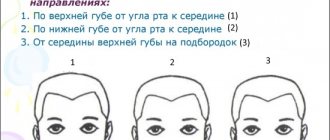Dyslexia is a fairly common phenomenon in which a person has difficulty reading. Such difficulties arise as a result of the special development and formation of mental functions of the brain. This feature most often begins to appear at early school age and can have various forms of expression. At the same time, any type of pathology can be corrected in various ways, one of the most effective of which is the Davis method.
Creator of a unique approach to the treatment of dyslexia
The author of the method, Ronald D. Davis, is a versatile personality. A sculptor, engineer and businessman, he founded the Reading Research Center in California, developing a revolutionary approach to treating dyslexia.
Despite all his talent and high level of intelligence, Davis experienced problems with reading since childhood, but this did not prevent him from achieving success in life. Moreover, by the age of 38, he was able to overcome his main vice, easily reading a book in just a few hours. Having seen the fruits of his labor, Ronald began to develop the author's approach and put it into practice when working with other people with similar pathologies. Today, his book “The Gift of Dyslexia” has been translated into many languages and is a real manual for the treatment of this disorder, the correct use of which brings a positive effect in almost 99% of cases.
Symptoms of dyslexia in children
Many parents ask the question: “Dyslexia – what kind of disease is it?”
I hasten to assure you that dyslexia in no way means any deviations in the mental development of the child. On the contrary, the peculiarities of perception and thinking often give rise to pronounced talents, for example, in drawing, handicrafts, dancing or any other type of creativity. The term “dyslexia” literally means “speech impairment”. The causes of dyslexia can be different, but it is believed that it is often associated with heredity, as a result of which the child is found to be incapable of learning to read and write. He may confuse letters, change their places, read syllables or letters, not understand the meaning of words and write them incorrectly. At the same time, standard training schemes - constant repetition and memorization - do not work.
Davis's method for correcting dyslexia in children and adults is based on the use of a number of tools that are designed to develop self-control, as well as on performing special exercises. I practice this unique and effective method, having received a certificate from DDAI - the International Davis Association (USA, www.dyslexia.com) and am a member of the DLF - British Davis Association (www.davislearningfoundation.org.uk)
The goal of this technique for eliminating dyslexia is not only for the dyslexic to master a tool for independent control of his condition, but also for the subsequent consolidation of this skill.
You can independently determine that your child has dyslexia by taking a test.
Signs and characteristics of dyslexia
- misses letters or words when reading
- swaps or confuses letters
- Changes the sequence of words in a sentence
- skips a line when reading
- guesses the word from the first letters, thinks out the endings
- stutters or stops
- speeds up or slows down when reading
- ignores punctuation
- frowns or appears distracted
- fiddling with the corner of the page
- tries too hard, concentrates while reading
- changes in voice
- the gaze becomes hazy or wandering
- turns red or pale
- shakes or swings his leg
Classification and main forms of dyslexia
It must be borne in mind that a child can express one characteristic of dyslexia, or several at the same time. It will also be useful to know that in Russia there is a classification of dyslexia. You may have to face the fact that defectologists distinguish the following types of dyslexia: semantic, optical, mnestic, phonemic, agrammatic.
In any case, the uniqueness and effectiveness of the course using the R. Davis method is that it allows you to correct ANY type of dyslexia, at any age, in 5 days!
What is the essence of the Davis technique?
Corrective work using this approach cannot be compared or contrasted with the therapy offered by official medicine. Dyslexics in this case are not considered as diseases, but as people with a distinctive visual way of thinking. Of course, they have a rich imagination and vivid perception. At the same time, their way of understanding the world around them differs from the generally accepted one. When creating certain images in their imagination, dyslexics experience difficulties and become disoriented in space, as a result of which they cannot correctly complete the thought process.
The Davis method is designed to turn off disorientation and set up a fixed “point of orientation” to counter it. Thus, a person’s attention and imagination is focused on creating realistic images in accordance with the words written on paper.
This approach in most cases helps to control dyslexia, regardless of the age of the person with the pathology. The methodology includes a set of measures that can be divided into 8 stages. Let's take a closer look at each of them.
Davis method for eliminating dyslexia by a specialist in Kyiv
Modern medicine already makes it possible to cure many chronic diseases, as well as this peculiarity of the child. Davis's method of eliminating dyslexia allows the development of this feature to be stopped as much as possible. Thereby increasing the active interaction of brain cells in other directions.
It is worth noting that this disorder in the development of a child can unshakably affect his activity and attentiveness, but despite this, practice in the direction of the “Ronald Davis Method - Dyslexia” significantly helps the child and adolescent in the future. The technique itself is named after the great Ron Davis, Ph.D., who developed hands-on activities to help children develop these and other hard-to-find skills. The basis is to develop memory and visual perception of reading letters. As a rule, reading is a process of developing visual memory, thanks to which the Ronald Davis method in Ukraine is mastered as quickly and simply as possible.
Assessing Perceptual Ability
The first step is to identify the most vulnerable area of dyslexia. For example, children often worry about ridicule from peers or low self-esteem. It is extremely important to identify the psychological consequences of pathology and carry out competent corrective work with them. Only after this the specialist reveals the degree of difficulties with perception.
Exercise. The child is asked to imagine a certain object on his own palm. To help a dyslexic person create a holistic image, the specialist asks leading questions: “What color is the object? What is its shape? Size? Weight?”, and also offers to change the parameters of an imaginary thing, increase or decrease it, transfer it to the other hand, etc.
The practice is aimed at using the so-called “mental eye”, which allows you to build a realistic model of the surrounding world in your imagination. When a dyslexic can easily perform this exercise, you can move on to the next stage of correction.
Methods for correction and treatment of dyslexia
A child with dyslexia may have extraordinary abilities. But his emotional maturity lags behind his age. It is impossible to get rid of dyslexia once and for all, but it can be corrected, help the child independently control his condition and protect him from rejection by his peers. With proper correction of dyslexia, he may not differ from his classmates, but when stress or illness occurs, errors in writing and reading increase.
When starting the correction of dyslexia, first of all you need to undergo an examination, diagnosis, and receive recommendations from specialists that are individual for each child.
The correction methods that we will consider apply to those children who are clinically healthy and have not been diagnosed with a mental illness. Correcting dyslexia is about building missing connections in the brain.
To help your baby, it is important to understand that such children are characterized by imaginative thinking; for him, thoughts are primarily pictures. It is difficult for a child to express his ideas in words; for him, these are just sounds that make him tired. From here it seems that the child does not understand you well. Sometimes it is precisely because of this feature that a dyslexic child’s speech is monosyllabic, inconsistent, and it seems that the child has a poor vocabulary. Dyslexia is often a concomitant condition of the diagnosis of ADD (attention deficit disorder). Try to describe La Gioconda in words. Feeling confused? A dyslexic child feels the same way when he needs to convey his thoughts.
Correcting the disease should begin with the development of speech and increasing the child’s vocabulary. But you can’t explain everything to such a child in words; for him it’s just sounds. He needs images, which means the parent needs to show everything: objects, signs, actions. It is important for a child to use his life experience in the future, and it is the parents’ duty to give him this experience. I advise you to stock up on dictionaries: explanatory, antonyms, synonyms, proverbs and sayings.
Speech development for a child with dyslexia and his parents is a way of life. First, the baby needs to be taught not only to read, but also to understand what he reads. One word can have several meanings, and all these meanings must be conveyed to the child. Subsequently, difficulties may arise with mathematics, music and other subjects where it is difficult to imagine an image.
When correcting dyslexia, it is very important not to force your child to read. This can make him hysterical, headache, nausea, and tears.
Visual information is important for a child, so read to him yourself, turn on various audio fairy tales and encyclopedias in audio format. Attending various performances and performances helps a lot.
Sports help especially well with adjustments, these can be exercises for coordination and balance. Wushu, qigong, yoga, and trampoline are suitable here. Breathing exercises will help the child calm down and give strength to further fight the disease.
Photo source: shutterstock.com
Switching
To obtain accurate images in the imagination of a dyslexic, it is necessary to teach him to turn off the disorientation that occurs every time he begins to create images that do not coincide with the prescribed information. To do this, Davis proposes creating an “orientation point” - a certain space in which a person mentally fixes vision and consciousness.
Exercise. The dyslexic is asked to imagine a straight line that extends from an object presented on the palm, passes through the tip of the nose and exits through the back of the head. The line ends approximately 20 cm above the occipital part - this is where the “orientation point” is located. Otherwise, the child can be asked to imagine that his consciousness is transferred to the person standing behind him.
Once the image of the “orientation point” is fixed in the dyslexic’s head, the need for detailed visualization of the line emerging from the object will disappear. In turn, the child will be able to control disorientation and receive the image in the form in which other people see it.
Preparatory stage: where to start learning according to the D. Davis method
Preparation for training is as important as the learning process itself. Without the necessary attitude and preliminary assessment of the situation, it is very difficult to solve the problem, even using the most successful technique.
Purpose, motivation and responsibility of the student
To successfully correct dyslexia using the D. Davis method, it is necessary that the child:
- knew about the existence of a problem and a way to solve it;
- wanted to eliminate her;
- was ready to take responsibility for changing the situation.
A dyslexic person must understand why correctional work is being carried out. The existence of a problem cannot be hidden from him. The student needs to be explained that his problem is solvable—there is a real opportunity to correct the violation. In other words, he must set a goal for himself. It is important to remember it in difficult moments, when laziness appears or when you do not want to move on.
In addition to the goal, there must be a strong desire to eliminate shortcomings. The child wants to solve the problem, wants to change, wants to learn and live like everyone else - this is the driving factor of progress in this matter.
After desire, responsibility becomes a mandatory factor - the readiness of the dyslexic to manage the process and be the main character in it, on which the success of learning depends.
The role of the teacher here is rather secondary, but still important. It is the mentor who must make sure that there are 3 motor components of the learning process. To do this, you need to have a conversation with the student:
- Find out what worries the child, what he sees as a problem. The student cannot be indifferent to what is happening. It is important that he speaks frankly and expresses all negative emotions.
- Ask if he would like to change the situation. Ask them to imagine what it would be like without this problem. The student himself must understand that he no longer wants to endure the symptoms of dyslexia.
- Offer your help and support, subject to his willingness to spend time and energy on learning.
Energy scale
It is important for children with dyslexia to learn to control their energy levels and bring them back to normal. An energy scale is an imaginary energy measuring device. It will allow a child with dyslexia to measure their activity level and adjust it according to the situation, as well as compare their own and others' energy levels. It is better to use a 10-point scale.
To show your child what the energy scale is for and teach how to use it, you need to discuss this topic with him:
- Find out if the student understands what a scale is. If not, then explain. Any scale is used to determine or regulate any indicator.
- Ask to imagine a scale that determines the level of energy and internal time. Ask your child questions, the answers to which will confirm the existence of a scale in his head: “What color and size is it?”, “How many divisions does it have?”
- The child should move the imaginary scale slightly to the side and place his hand next to it.
- Ask about his energy level at the moment.
- Ask to lower or increase the level, find out what sensations arise. If the indicator decreases, then the state will be calmer and more peaceful. If the indicator increases, the child will feel cheerfulness, an influx of strength and energy.
- Ask what the indicator of this scale is in various situations: when he sits in class, plays sports, plays, listens to music.
- While walking down the street, you can ask your student about the expected energy level of other people. Explain that it is easier to communicate with a person if you are on the same energy level with him.
After discussing the topic, it is necessary to tell the student that the scale is always near him. With its help, he can determine his energy level at any time and adjust it according to the environment.
The role of the mentor
Throughout the entire training using the Davis method, the mentor helps the dyslexic person, gives tasks, checks their completion, and monitors the child’s condition. It is necessary for the student to feel supported by him. Compliance with the following basic points is considered mandatory:
- absence of pressure, violence, punishment;
- patience and tolerance towards the student. All the child’s mistakes and failures are, first of all, the teacher’s mistakes and failures;
- praise for any successes, even small ones;
- establishing trusting friendships, constant communication, discussing successes, obstacles and searching for new solutions;
- availability of time for rest and play;
Important! If patience and nerves are lacking at some point, you should not take it out on the student. It's better to stop exercising for a while. Sometimes a mentor also needs rest and relaxation.
Discharging and checking
When a dyslexic gets into a state of disorientation, the process of creating a “point of orientation” and maintaining it for a long time takes a lot of effort. Many people begin to feel headaches or even feel excessive muscle tension in the neck. In order not to lose control of the “mental eye” and get rid of discomfort, it is necessary to discharge.
Exercise. A dyslexic person is encouraged to use their imagination to create a feeling of calm and relaxation that spreads not only throughout the body, but also reaches an “orientation point.”
With constant training, neck tension and headaches will go away very quickly. After this exercise, you need to make sure that the mind's eye is at the same fixed point. To do this, the dyslexic simply needs to point his finger at the place where his “orientation point” is located. If the point is determined correctly, the test can be considered successful. If not, you should re-place it in the correct place. It is necessary to move on to the next stage after a person has mastered the skills of discharge and verification.
The essence of D. Davis's method
Ronald Davis, author of The Gift of Dyslexia and The Gift of Learning, has suffered from dyslexia since childhood and knows firsthand the difficulties that children with this diagnosis face. Poor performance at school, constant problems communicating with peers, their bullying and ridicule, dissatisfaction and disappointment from teachers and parents - all this awaits someone born dyslexic.
Davis proved that dyslexia is not a defect, but a set of innate abilities that you need to learn to manage. Hardly anyone considers these talented people stupid and underdeveloped: Winston Churchill, G.H. Andersen, Leonardo da Vinci, Nelson Rockefeller, Keanu Reeves, Agatha Christie, Steve Jobs, A. Einstein. But these are examples of individuals with dyslexic disorders.
Therefore, if asked how to cure dyslexia, Davis would answer something like this: “Dyslexia is a great gift. It doesn’t need to be treated, it just needs to be corrected so that this feature only brings benefits.”
By observing himself and other gifted people, Davis was able to identify the internal source of all the problems of dyslexics - disorientation. It is this that gives them the opportunity to see objects in volume, to easily study mechanisms that are incomprehensible to most people, and to think figuratively. But at the same time, it interferes with free reading and handwriting: people with dyslexia find it difficult to perceive flat information, recognize, and reproduce symbols and words from ordinary book pages.
The basis of Ronald Davis's technique is to turn off disorientation and move the “epicenter of perceptions” (mental eye) of a dyslexic to the optimal “point of orientation.” After gaining the ability to control their consciousness, children with dyslexia learn to read using 3D models of symbols, words and plots that they understand.
The Davis method, as applied to each student, involves going through the following stages:
- Preparatory - includes goal setting, the formation of motivation and responsibility, the concept of an “energy scale”.
- Adjustment of consciousness. Consists of sections: assessment of perception ability, switching, discharge, fine tuning, coordination tuning.
- Mastering symbols and reading techniques.
Settings
At the beginning of therapy, the “orientation point” of a dyslexic person is quite unstable, so it is very important to teach how to accurately determine its location. Only the ability to accurately adjust the optimal point will allow you to control disorientation and manage dyslexia in general.
To adjust the location of the point, you need to mentally move the "mental eye" around the intended "orientation point." In this way, the child will be able to identify the optimal arrangement of these concepts. Having found the necessary point, the dyslexic should fix it using an imaginary anchor.
Coordination
Children with dyslexia have difficulty coordinating their movements and correctly identifying their left and right sides. To get rid of clumsiness and confusion, special exercises that must be performed after successfully identifying and tuning the “mental eye” will help.
Exercise. The child stands on one leg and balances on it, maintaining balance. Having established balance, he needs to catch small balls, doing this alternately with each hand, and then with both at the same time. At the next stage, the ball is thrown with a slight deviation in order to complicate the task and provoke the dyslexic to go beyond the established axis of balance.
Mastering symbols
The imagination of dyslexics is only capable of perceiving three-dimensional three-dimensional images. In turn, the reading process is based on understanding printed two-dimensional symbols, which makes learning insurmountably difficult for these children.
Exercise. The child is invited to create letters, numbers and other written characters from plasticine or clay. After this, it is necessary to compare the three-dimensional figure with its printed counterpart, determine its location in the alphabet or number order. It is necessary to move on to working with the next sign after the dyslexic has consolidated the previous symbol in his mind, can give examples with it, and understands the purpose of its use.
Types of dyslexia
The classification of dyslexia was carried out by teacher-professor R.I. Lalaeva.
There are 6 types of disease:
- Semantic, manifested in a violation of the understanding of read words, sentences, texts during technically correct reading, i.e. the word, sentence, text are not distorted during the reading process.
- Optical, manifested in difficulties in assimilation and in the mixing of similar graphic letters and their mutual substitutions. There are literary optical dyslexia and preverbal dyslexia.
- Phonemic, there are two forms. The first form is a reading disorder, where sounds are replaced (b-p, d-t, s-sh, zh-sh). The second form is reading pathology, which is caused by letter-by-letter reading, distortion of the sound-syllable structure of the word. Distortion of the sound-syllable structure - in the omission of consonants during confluence (mark - “mara”); in insertions of vowels between consonants when they come together (pasla - “pasala”); in permutations of sounds (duck - “tuka”); in the omission and insertion of sounds in the absence of a combination of consonants in a word; in omissions, permutations of syllables (shovel - “lata”, “lotapa”).
- Mnestic - difficulty in mastering letters, in their undifferentiated substitutions.
- Agrammatic dyslexia. With this form of dyslexia, the following are observed: changes in case endings and number of nouns (“from under the leaves”, “at comrades”, cat – “cats”); incorrect agreement in gender, number and case of noun and adjective (“interesting fairy tale”, “fun for children”); change in the number of the pronoun (all – “all”); incorrect use of gender endings of pronouns (“such a city”, “our rocket”); changing the endings of third-person verbs of the past tense (“it was a country”, “the wind rushed”), as well as forms of tense and aspect (flew - “flew”, sees - “saw”).
- Tactile dyslexia usually occurs in blind children.
Sequential reading
Dyslexics perceive written information not letter by letter, but in a single, holistic way. When studying a word, such a child guesses what object or phenomenon it refers to. It is necessary to develop the skill of sequential reading, highlighting individual syllables and letters. Comprehension of the information read is not taken into account at the initial stage.
Exercise. Choose the simplest possible book and begin reading sequentially letter by letter and syllable. It is important to take breaks and check that the “orientation point” is located correctly.
The next step is to repeat the word read letter by letter and syllable, as well as explain its meaning. In the future, you should develop an understanding of not only individual words, but also entire sentences.
Reading training
If a dyslexic person knows the alphabet well, but makes mistakes when reading: he pronounces words backwards, swallows their endings, misses letters in them, he needs to clarify the meaning of erroneous (missed) words and practice his reading technique.
Mastering words
Most words evoke specific associations for any person. For example, dog, nose, green. It is not difficult for a person, including a dyslexic person, to imagine what a table, a spoon, or a horse are. But auxiliary words, such as prepositions, conjunctions, interjections, are very difficult to imagine. It is with them that people with dyslexia have the most problems, because they most often provoke disorientation. Davis advises writing out and parsing these words as follows:
- Ask if the child knows what this word means. Ask if it causes any discomfort. If yes, find out why.
- To explain the meaning of the word, you can look it up in the dictionary.
- Ask the student to form a word and a plot for it, and run a finger over the plasticine figures.
- Cover the model with a sheet. The student says the word and its meaning, then writes down the learned information in a notebook.
In a similar way, you need to work through all incomprehensible or similar words. The plasticine model exists until the next lesson. Before breaking it, you need to make sure that the student has assimilated the information received.
Note! If, after carrying out the “Mastering of Symbols” technique, mistakes are still made in the word, you need to extend the life of the model or create another plot.
Step by step reading
Learning to read according to the D. Davis method takes place in 3 stages:
- Spell reading.
- Run your eyes - run your eyes - spell it.
- Punctuation in images.
Remember! When mastering reading techniques, it is important not to miss signs of disorientation: skipping, replacing letters, speeding up or slowing down the pace, rubbing the neck, fidgeting, bending the head too much over the page. When they are detected, you must stop and ask the student to check the orientation point. You can also take a break.
Spell Reading
The main tasks of the first stage:
- learn to read from left to right, moving along the page from top to bottom;
- learn to define words as a collection of letters.
Rules for the “Spell” stage:
- Comprehension of the information read is not important - what is important is to be able to reproduce the printed information.
- You need to read slowly, without tension, without mistakes.
- The lesson lasts no more than 10 minutes, then you should take a break of the same length.
On a note! You can simplify the reading process for the student by covering the text to the right of the word being read with one blank sheet, and covering the lines below with another. Another option is to increase the spaces in the text.
Run your eyes - run your eyes - spell it
At the second stage it is important to learn:
- move your gaze correctly - from left to right;
- recognize words, read them in their entirety.
Understanding the text is encouraged, but not required.
The task is performed like this:
- The student runs his eyes over the word and tries to read it.
- If you can’t pronounce a word the first time, you need to run your eyes over it again and try to read it.
- If it is impossible to pronounce the whole word again, the student reads it spell by letter.
Punctuation in images
The stage “Punctuation in images” is the final one. Its goal is to achieve a complete understanding of the material read.
It is important to understand the meaning of all words and punctuation used. Before each punctuation mark, the child stops and explains the meaning of what he read. If some words are not clear, their meaning needs to be analyzed using the “Mastering of Symbols” method.
The Ronald Davis Method is an effective way to combat the negative aspects of dyslexia. But to achieve good results and bring the child’s skills to the level of his peers, it is necessary to show patience and hard work.
For classes to be more beneficial, you need to do them daily. Remember to remind your child to move the mind's eye to the orientation point. During the learning period, it is important to rejoice at every progress forward, as well as praise the child for his efforts and successes.
Related posts:
- What is "War and Peace" about? Summary of the novel “War and Peace” by chapters. All answers...
- I.S. Turgenev “Mumu” “Mumu” I.S. Turgenev: read the story ONLINE without registration. The work in its entirety...
- Experimental study of the development of coherent speech in preschool children with ODD. Diagnosis of coherent speech in children is carried out using accessible...
- P.P. Ershov “The Little Humpbacked Horse” - summary of “The Little Humpbacked Horse” by P.P. Ershov - a very brief summary for the reader...










